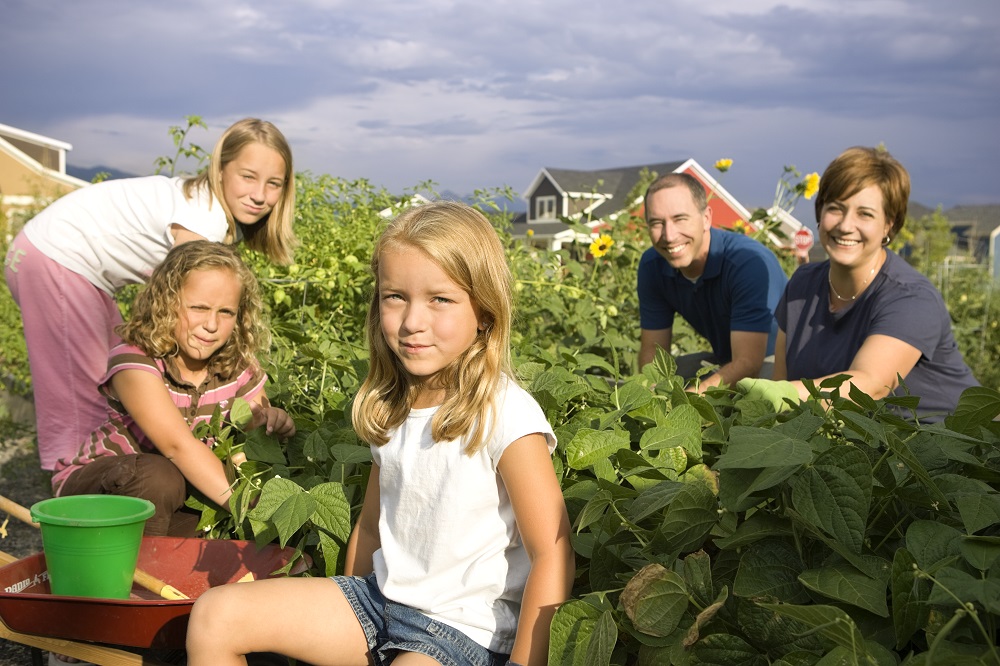Feed a kid a vegetable and he will be healthy for a day. Teach a kid to grow his own vegetables and he will be healthy for a lifetime.
Call it taking green to the extreme: Smart developers, entrepreneurs and non-profit groups are now installing community gardens in their developments and local neighborhoods, beautifying while enhancing social ties. Such gardens have risen from being local beautification projects to being recognized by the National Green Building Standard (NGBS) as a substantial green feature in any new or existing community. Gardens not only offer a chance for families and communities to engage in wholesome outdoor activity, but also provide opportunities for people of all ages to learn to cultivate their own very local food source.
Organizing a community garden may not sound like a full time job, but farming entrepreneur Daron “Farmer D” Joffe, CFO and founder of Farmer D Organics, has made it his. Farme D is a seasoned expert in community garden development, experienced in designing and developing community gardens and finding work for volunteers. He has even developed a “closed-loop” business model with Whole Foods Market.

Daybreak, East Lake Summer 2007
Many of the developers, designers and managers involved in community garden work emphasize the importance of teaching young children how to grow and sustain their own food sources. Joffe agrees. “By showing someone how to grow vegetables on their own, we provide them with the knowledge to continue this process for the rest of their lives,” he says.
Joffe’s main goals when creating a community garden? “We want to provide a place for members of the community to get to know one another,” he says, “and a place for all ages to engage in wholesome, rewarding and outdoor activities together.”
When developers W. Don Whyte and Jeff Haws set out to design community gardens for Utah’s new Daybreak development project, they never anticipated the residents’ eagerness and enthusiasm. “The first 50 plots created went so quickly we soon realized we were going to have to change the project’s original design to include more garden space,” Whyte said. The development, located in Salt Lake Valley, Utah, now contains hundreds of garden plots—and still has a waiting list. Whyte and Haws enlisted the help of Joffe, and together the three developers went through a trial and error process to figure out how to best manage this growing community’s passion for gardening.

Daybreak, East Lake Summer 2007
Developers also emphasize the importance of a garden’s location and accessibility. A walkable location allows members to fit gardening into their daily routine, Joffe explains. “If the garden is easily easy to get to, people will go there often. You want to build it in a location that doesn’t require people to get into their cars.” Urban community gardens present an exception to this rule, however. In city settings, members will not only use gardens near their homes, but also near their offices. These gardens allow commuters to stop by on their way in and out of the city.

